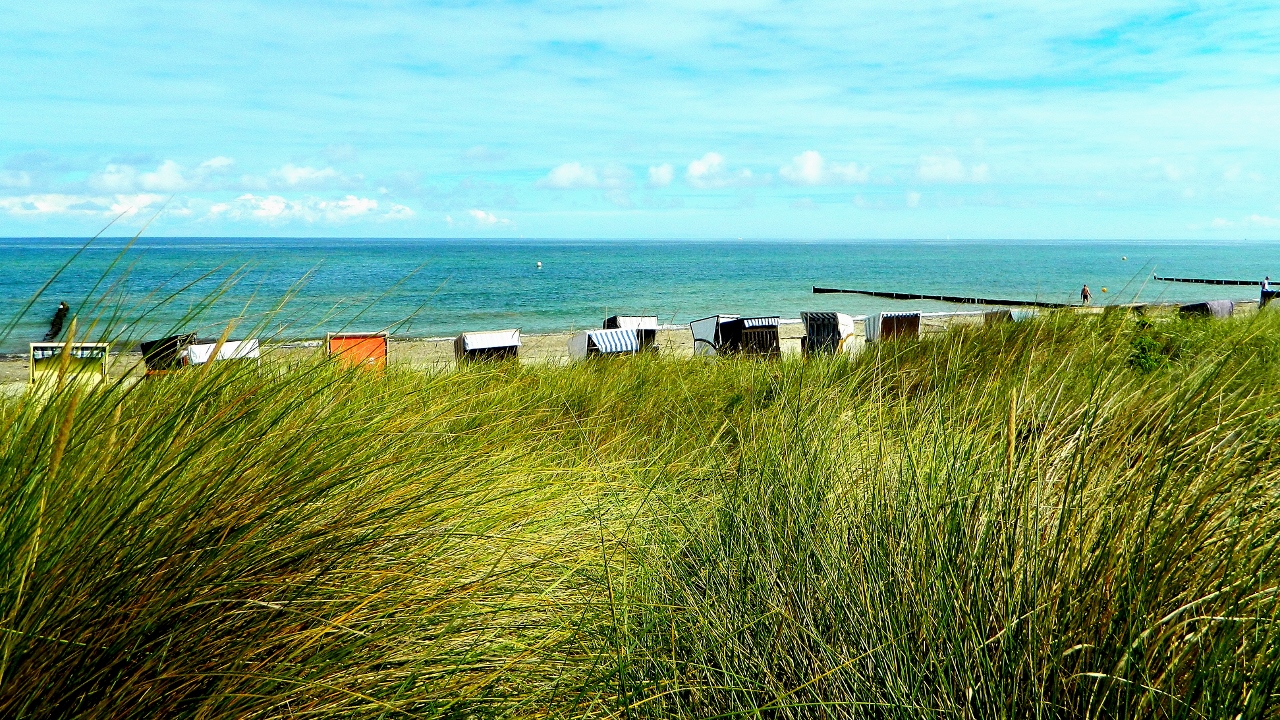The German Baltic coastline is beautiful. White sandy beaches stretch in long and wide bays which bank up into high sand dunes lined with tall grasses that blow and sway in the cooling breeze from the North.
The coastline is fringed with forests of pine and deciduous trees and, for the week that we meandered north and east alongside it, the sparkling dark blue water of the sea mirrored azure blue skies above it.

At Wismar we arrived in the small Hanseatic port as it was preparing for its annual Swedish festival, commemorating the two centuries when it was part of Scandinavia, and seemingly still feeling so.
The colourful gabled houses and civic buildings lining the town’s pretty square, the largest in North Germany, were decked with Swedish flags. A constant stream of white delivery vans were driven by men in overalls who unloaded scaffold, marquees, sound systems and copious supplies of alcohol to welcome the masses expected for the weekend-long party.
We ambled down to the port and tucked into hotly smoked fish served up fresh from the boats and simply in a buttered roll.
Leaving under grey skies the next morning we pottered along the Wismarbucht (or bay) driving past small farming communities along narrow tree-lined roads.
We stopped at Boinsdorf for coffee and a first look at the Baltic but as we were on an inlet the dark waters seemed more of a lapping lake then a mighty sea so we headed further north to Wittenbeck.
A farming family’s aire was a gem set high up above the crashing surf of the sea amidst golden harvested fields and alongside a restored and fully working steam engine railway, the Molli. It was time to get our new table and chairs out under the awning!
Cycling west on a clifftop path to Kuhlungsborn, we passed nudists beaches, dogs’ beaches and children’s beaches, sometimes segregated sometimes confusingly together, and reached the smart marina and Germany’s largest coastal resort in time for a sundowner.
We joined happy holiday makers lounging on the wooden decks of elevated bars and watching the antics of the jet set in their highly polished yachts.
Cycling east to Heilingendamm the next morning we found Germany’s oldest coastal resort, established in 1793, and nestled into a forested bay. The Grand Hotel Heilingendamm still welcomes well-paying guests to its heritage-listed and white palatial buildings set on the water’s edge.
Blue and white wicker Strandkorbe, beach baskets for sheltering within from the sun and wind, were arranged in long lines facing the sun. A gaggle of sea ducks surfed on the shallow waves and dabbled for a meal of mussels. An air of gentility pervaded even though nearby noisy renovation work was being carried out on a collection of bafflingly derelict but still lovely 19th century mansions.
We headed further east to Warnemunde, a large shipping, ferry and cruise port to stay at its harbour. For 24 hours we were treated to the sight of Scandinavian ferries regularly arriving from Helsinki, Trelleborg and St Petersburg, as well as large industrial barges and gigantic and luxurious cruisers.
The pretty town was full for the weekend and bustling with others along its cobbled streets past former ship captain’s cottages (now designer shops) we ducked through plumes of woody smoke billowing from the many free-standing fish and eel smokers lined up along the harbour side.
Climbing the 34 meter high lighthouse gave views across the huge expanse of busy beach and harbour and 20 miles out to sea towards Denmark.
The vaguely troubling sight of a darkly simian-haired man boxing the ears of his pretty granddaughter for wanting to splash in the waves caused us to reflect on Germany’s current immigration situation. Newspaper headlines proclaimed ‘burkhas forbidden’ and clearly there is tension in assimilating the masses of new Muslim immigrants into existing communities. Neo-Nazi graffiti slogans are not uncommon.
In Stralsund, brightly painted townhouses in vibrant colours of yellows, blues and reds were mixed with striking gothic brick-gabled and spired churches and civic buildings.
The style is called ‘Backsteingotick’ and Stralsund, Germany’s second most important member of the Hanseatic League, boasts copper turrets, conical spires, triangular gables, steeply stepped gables, Romanesque arches, teetering brick pillars and cavernous columned courtyards. It was dazzling and largely closed for business on a quiet Sunday afternoon.
At the town’s microbrewery we joined everyone else on the neatly decked rooftop for views of the canals and hanseatic brick warehouses at the waters’ edge.
The swing bridge opened and a flotilla of wooden sail boats and little tugs bustled into the harbour just in time to beat the burgeoning rainstorm.
We headed on towards the Polish border and made our last stop in Germany at Greifswald, another former hanseatic town.
Cycling out along the River Ryck to the fishing village of Wieck for fried backfisch in bread rolls (and a visit to the ruined brick abbey of Eldena) we clocked up another 15 miles, before eventually finding Bertha back at a family-run stellplatze, handily close to a supermarket.
It was time to stock up on German essentials and plan the next day’s drive across the border and into Eastern Pommerania… to Poland!
Here’s a gallery of our week on the German Baltic Coast:




















































